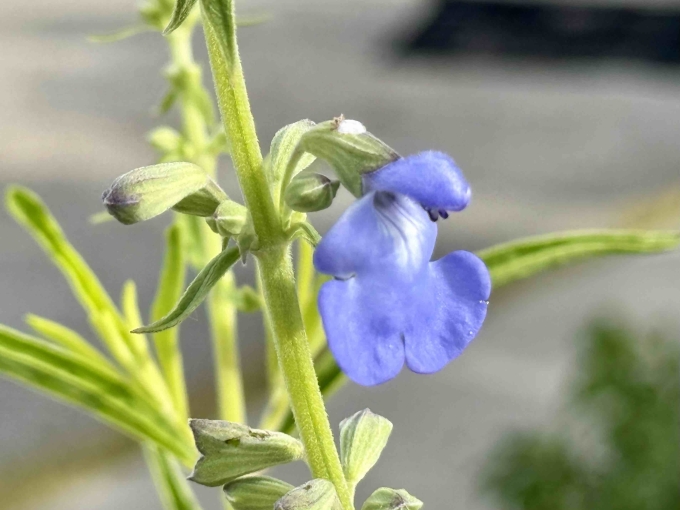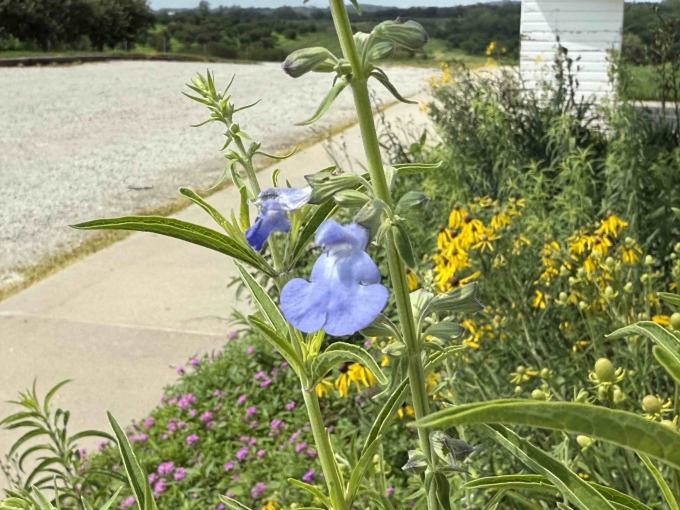Common Name: Blue Sage, Pitcher Sage
Family: Lamiaceae
Plant Type: Herbaceous Perennial
Native Range: Central and southern Great Plains and Midwest, including Nebraska
Hardiness Zones: 4–9
Height: 2.0–5.0 feet
Spread: 1.5–2.5 feet
Bloom Time: Late summer to fall (August–October in Nebraska)
Bloom Description: Spikes of clear sky-blue, tubular flowers borne on tall, slender stems
Sun Exposure: Full sun
Water Needs: Low to medium
Soil Preference: Well-drained, sandy or loamy soils; tolerates clay
Management Level: Low
Suggested Use: Prairie plantings, pollinator gardens, borders, naturalized areas
Attracts: Bees, butterflies, and hummingbirds
Tolerates: Drought, heat, poor soils, deer
Notable Features: Brilliant blue flowers, drought tolerance, excellent pollinator plant
Nebraska Growing Notes:
Blue Sage is a native prairie perennial that performs beautifully in dry, sunny Nebraska landscapes. It thrives in well-drained soils and full sun, making it ideal for xeric plantings and sandy or rocky sites.
Its tall, graceful stems are topped with striking sky-blue flowers that appear late in the season, providing crucial nectar for pollinators and migrating Monarchs. Plants may lean or flop in rich soil or with too much shade, interplant with grasses or other sturdy perennials for support.
Minimal care is needed beyond occasional thinning or cutting back in spring.
Landscape Use:
Perfect for prairie restorations, pollinator beds, wildflower meadows, xeriscapes, and naturalized areas. Pairs beautifully with Solidago, Liatris, Echinacea, Rudbeckia, and native grasses for a vibrant, drought-tolerant planting.
Caution:
Non-toxic and wildlife-friendly. Tall stems can flop in rich soils or high winds, plant in masses or with companions for best effect.
Garden Locations:
Sources:
https://www.missouribotanicalgarden.org/PlantFinder/PlantFinderDetails.aspx?taxonid=281504


